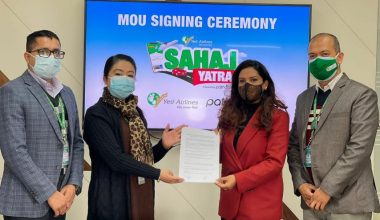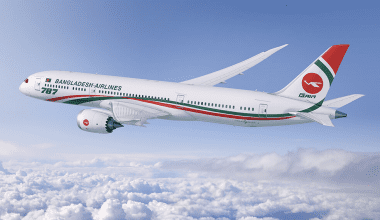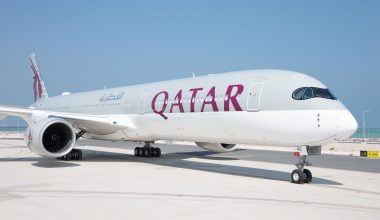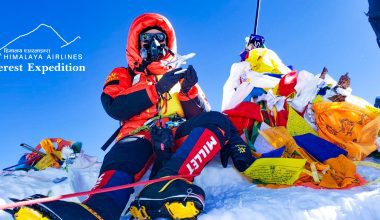As a pilot, you can enjoy the never-ending views of the majestic blue sky and meet various people of various nationalities and backgrounds. The lucrative salary, travel opportunities, and immense respect-the pilot’s lifestyle are alluring and inspiring. But there are certain tradeoffs pilots must make for this sophisticated lifestyle. They are entrusted to the safety of passengers and properties onboard. While the role of technological advancements in safer aviation can’t be underestimated, pilots still retain the power to make or break flight safety. What are the responsibilities of a pilot? Let’s dive right into the pilot duties and responsibilities in detail.
What is the duty of a pilot?
The primary duty of a pilot is to operate the aircraft safely from origin to destination for commercial or non-commercial purposes. While there are many types of pilots, those working for airline companies are the most commonly-known pilots. They are responsible for ferrying passengers and cargo from/to fixed points without compromising their safety. The preflight duties of a pilot include weather checks, confirmation of flight plans, scrutiny of flight systems including fuel, engines, hydraulics, and electronics, weight, and balance check, compliance with air traffic clearance upon receipt, etc.

What are the responsibilities of a pilot preflight, during flight, and post-flight?
Pilot responsibilities include much more than simply flying and navigating the aircraft from one location to another. Since the steering of passenger lives and aircraft is in the hand of the pilot for hours, it is essential that pilot take their responsibilities seriously before the flight, during flight, and after landing.
- Preflight – Pilot responsibilities
If you are wondering what preflight pilot responsibilities are, here’s your answer:
1. Check the aircraft logbook (which documents flight, crew names, flight times, landings made, and other information) and sign it to take responsibility for that particular airplane.
2. Run a comprehensive checklist of systems to ensure the proper functioning of aircraft engines, controls, instruments, and others. Ensure the appropriate loading of baggage and cargo into aircraft.
3. Perform preflight briefing, which includes current weather briefing and forecast, flight-related issues, etc. Regarding whether planning, consider wind, precipitation, turbulence, temperature, and visibility currently, en route, and at the destination. No matter how skillful pilots are, no one can compete with nature.
Also Read: How long does it take to become a captain in an airline?
4. Ascertain numerous factors like airport altitudes, outside temperatures, wind speeds, and directions, aircraft weight, flight routes, etc., to provide the fastest, safest, and smoothest flights.
5. Confirm flight plans which cover flight details like departure and destination airport, routings, altitudes and headings to be flown, amount of fuel onboard, number of passengers and crew on aircraft, loading of dangerous goods, emergency equipment on board, etc.
6. Upon completing aircraft & avionics setup, safety system checks, loading of passengers and cargo, request taxi. Coordinate with air traffic controllers for takeoff instructions.
As a professional aviator, you can’t go flying cutting corners on preflight preparations such as completing visual inspections of the aircraft inside and out, checking the weather, routing, weight, balance, etc. The pilot must fulfill these preflight responsibilities without taking to the skies.
- Pilot responsibilities during flight
During the flight, the pilot-in-command is responsible for the safe operation of the aircraft and regularly checks the airplane’s position, weather condition, and air traffic. The safety of all crew, passengers, and property onboard depends on how the pilot performs during flight. Some of the responsibilities of a pilot during flight include:
- Close coordination with cabin crews to ensure all passengers comply with in-flight safety rules
- Upon the clearance to take off, operate controls and pilot the aircraft to ferry passengers and freight to designated destinations while adhering to flight plans and procedures.
- Monitor the operation of aircraft engine and flight systems, consumption of fuel, load changes, flight routings, etc.
- Remain in close contact with the air traffic controllers and concerned authorities to obtain and review data on fuel supplies, load, routes, weather conditions, or schedules to ensure safe operation.
- Make split-second decisions as circumstances dictate and request for flight change plan, including alterations in altitudes or routes if needed.
- The responsibilities of a pilot during/after landing
Once the duty of navigating the aircraft in the vast wild blue yonder is almost complete, it’s time to return to the ground. The pilot’s responsibilities during descent include communication and coordination with support teams, navigation equipment setup, review of expected instrument approach procedure, and calculation of approach &landing speeds. Once you enter the destination terminal, you must alert flight attendants and passengers for landing. After you receive the landing clearance, guide the aircraft safely onto the runway and taxi to the gate.

The captain taxies the aircraft to the designated gate for parking and reviews the parking checklist with the first officer. The responsibilities of a pilot for a particular flight tend to be over after everyone safely exits the aircraft. The final task is to file the flight trip report and airplane status after getting the aircraft on the ground.
The responsibilities of the pilot-in-command and first officer
In a multi-crew aircraft, the responsibility of taking over the entire operation of the aircraft lies in the hands of the pilot-in-command called the captain, and the second-in-command known as the first officer. In medium or long-range flights, they often take turns flying different legs, and each assumes full control of the airliner in case one becomes incapable.
The pilot-in-command, who sits on the left side of the cockpit, is the final authority regarding the safe operation of the aircraft. He is a very experienced and highly qualified individual taking the ultimate responsibility for the aircraft and passengers even when the First Officer controls the airplane. In an emergency requiring immediate response, the captain has the power to break the rules. The pilot-in-command responsibilities involve taking major command decisions, instructing the first officer and crew team, handling emergencies, etc.
The second-in-command sits on the right side of the cockpit and assists with the aircraft’s navigation. He is proficient enough to take over the piloting decisions if something wrong happens to the captain. The first officer can step in circumstances where flight safety is jeopardized, such as sudden incapacitation of the captain, fatigue, human errors, etc.
Responsibilities of different pilots
As a holder of a private pilot license (PPL), you have much lesser responsibility as compared to commercial pilot license (CPL) and airline transport pilot license (ATPL) holders. It’s because you don’t have the compulsion to carry passengers and cargo, and you can’t make a living with this license. Private pilots can travel solo and fulfill their personal needs by flying smaller planes like jets or light aircraft. But depending on the nature of work, they might be responsible for ferrying businessmen or celebrities and offer services for-hire to a range of customers.

Commercial airline pilots must take responsibility for the particular flight before takeoff till landing while ensuring the safety of passengers and property. They must transport people, cargo, mail, and others from one point to another quickly, safely, and conveniently.
Also Read: Bachelor of Aviation-All you need to know
Among all pilots, military ones experience the most stressful career as they have to work under extreme conditions at times and hold responsibilities of ferrying passengers or cargo, performing reconnaissance missions, combat, search and rescue operations, etc. The serious character of military mission demands highly responsible military pilots who must go through the most unthinkable situations and avoid mistakes that can put millions of dollars, lives, or whole operations at risk. Some military pilots are also assigned to evaluate new and experimental aircraft prototypes.
Skills needed to be a pilot
Pilots must exercise peak physical and mental wellness, high intelligence, and valuable flight experience to perform reliably and up to the passengers’ expectations. Becoming a pilot is a fast-paced career that demands intensive training, high problem-solving, and risk-assessment skills. You must have good cognitive skills to acknowledge the receipt and understanding of ATC instructions and excellent communication skills to communicate, question, and respond to passengers, crew, and other aviation personnel. Unlike a traditional 9-5 job, you have to take responsibility for the flight anytime, be it morning, day or night.
Final words
It is a great responsibility for parents to take care of kids and ensure their safety. One can imagine how much of a commitment and guts it takes to hold the responsibility to fly hundreds of unknown people every day without jeopardizing their safety. The duties of a pilot are diverse and huge, depending on the type of pilot licenses they hold. A pilot’s duty starts even before the flight takes off and doesn’t end until the parking of the aircraft at the destination airport. The responsibilities of a pilot seem daunting, but they result in extremely generous pay, utmost respect, and unique experiences for the pilot.






